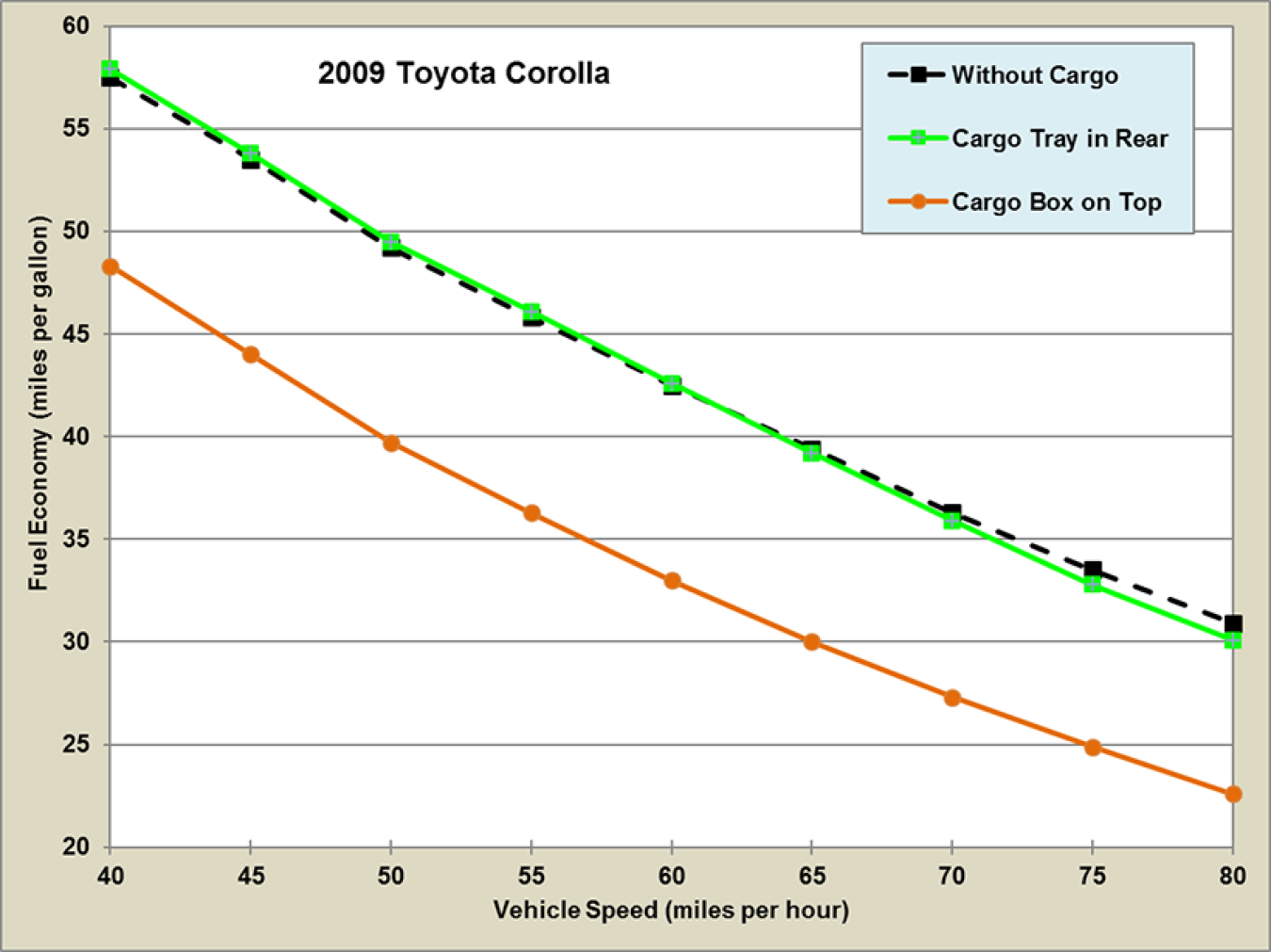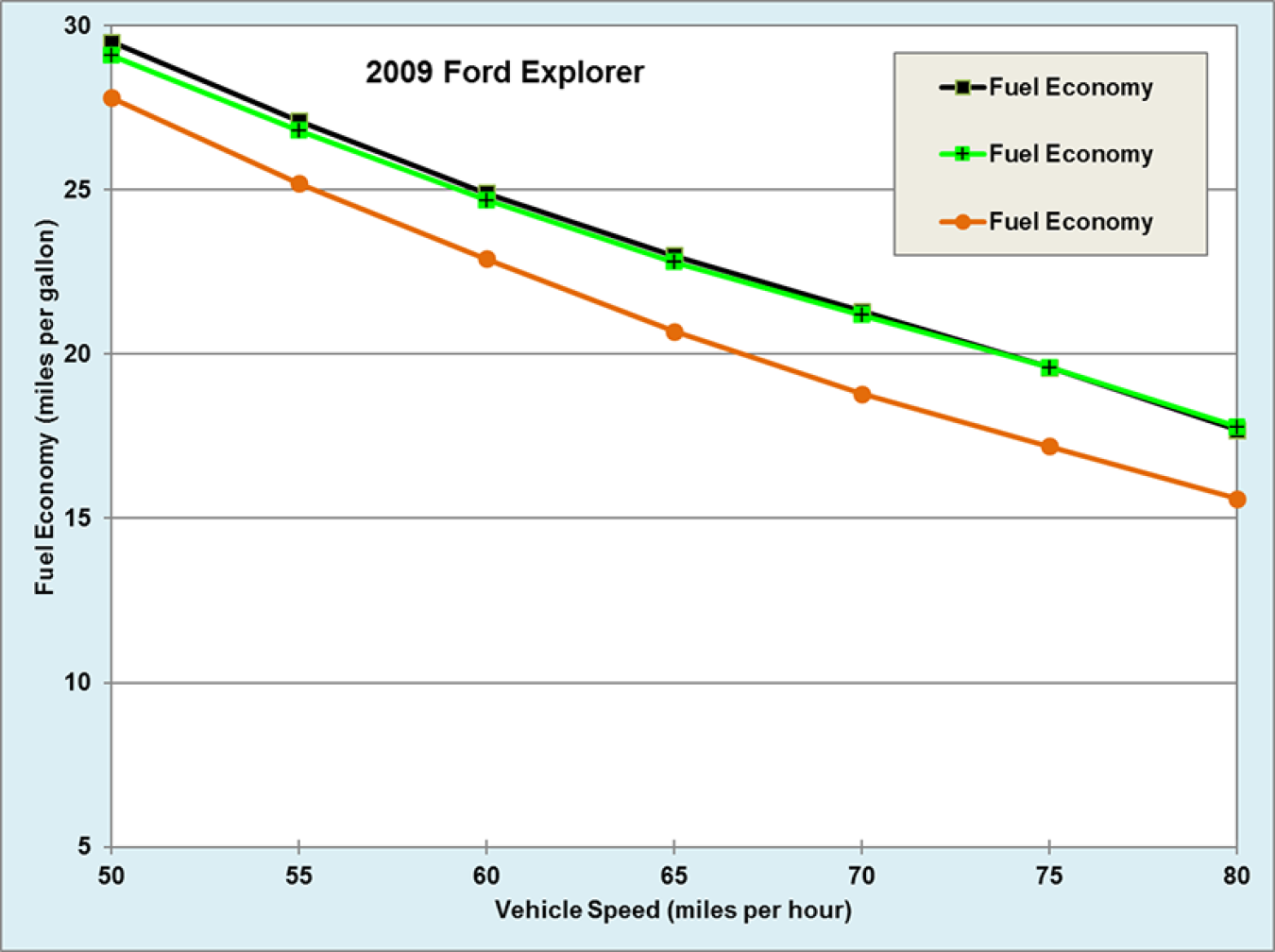SUBSCRIBE to the Fact of the Week
While traveling for vacation, adding a cargo box on top of a vehicle can decrease fuel economy significantly compared to using a rear cargo tray. Testing was performed on two vehicles – a 2009 Toyota Corolla and a 2009 Ford Explorer with no cargo, with 100 lbs. of cargo in a cargo box on top, and with 100 lbs. of cargo on a tray at the rear of the vehicle. At 65 miles per hour (mph), the cargo box on top of the Toyota Corolla resulted in a decrease in fuel economy of 25%, but the cargo tray produced only a 1% decrease. The Ford Explorer’s fuel economy at 65 mph decreased by 10% with the cargo box on top, but by only 1% when using the cargo tray. The fuel economy decrease varies with the speed of the vehicle.

Fuel Economy by Speed for a Toyota Corolla and Ford Explorer with and without Cargo Storage


Source: Thomas, J., Huff, S., and West, B., "Fuel Economy and ns Effects of Low Tire Pressure, Open Windows, Roof Top and Hitch-Mounted Cargo, and Trailer," SAE International Journal of Passenger Cars Mech. Syst. 7(2):2014, doi:10.4271/2014-01-1614.

